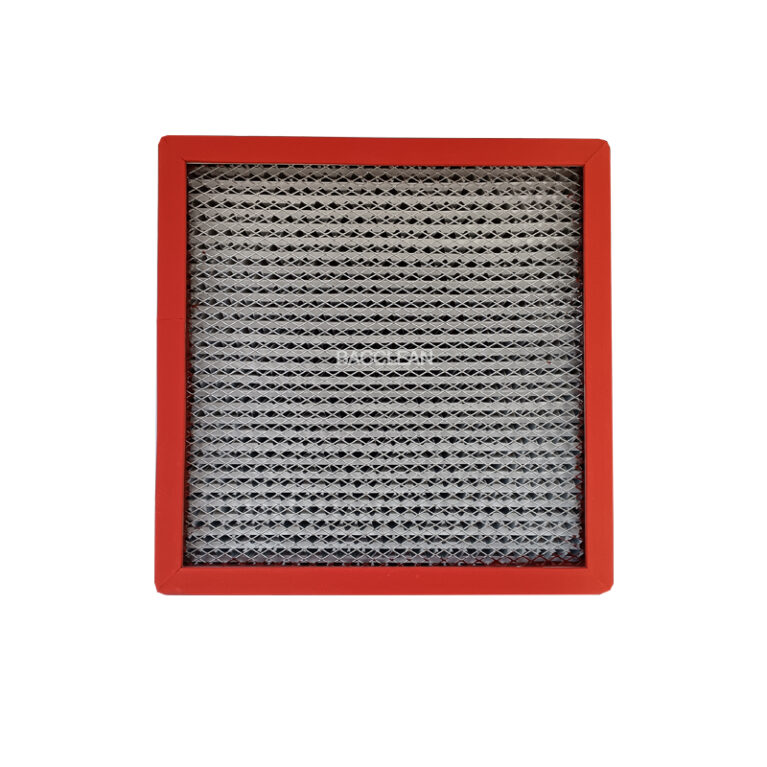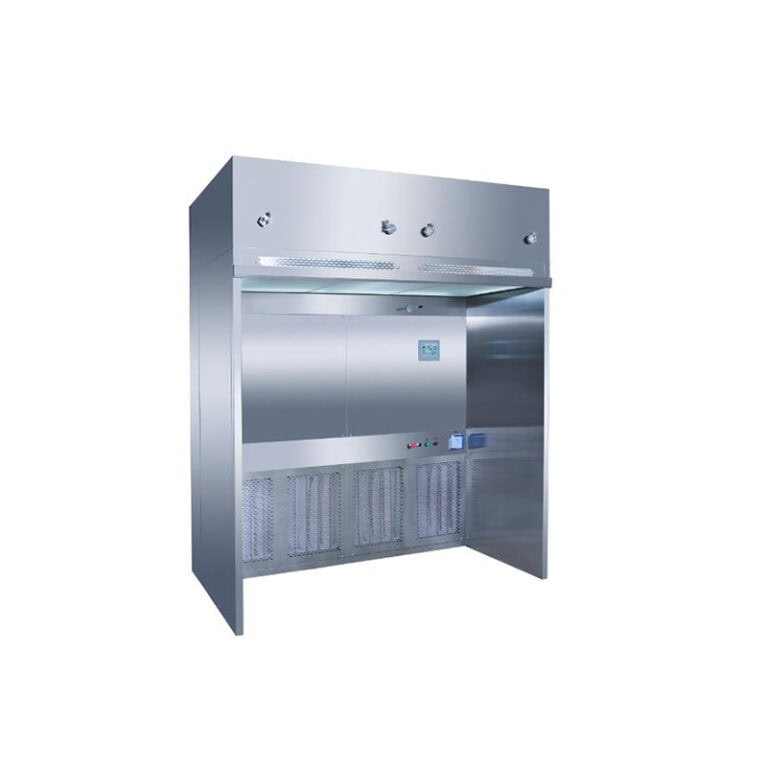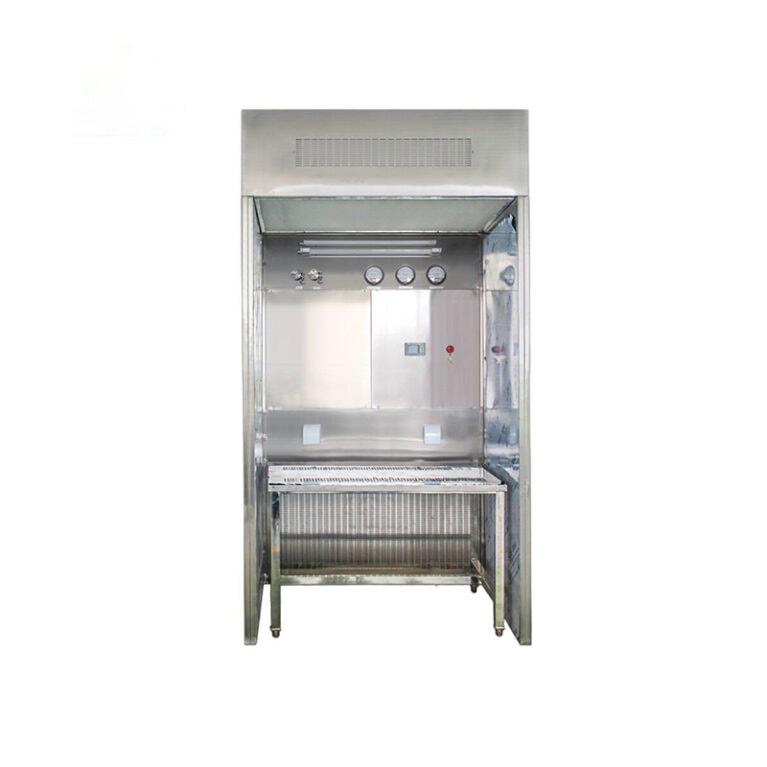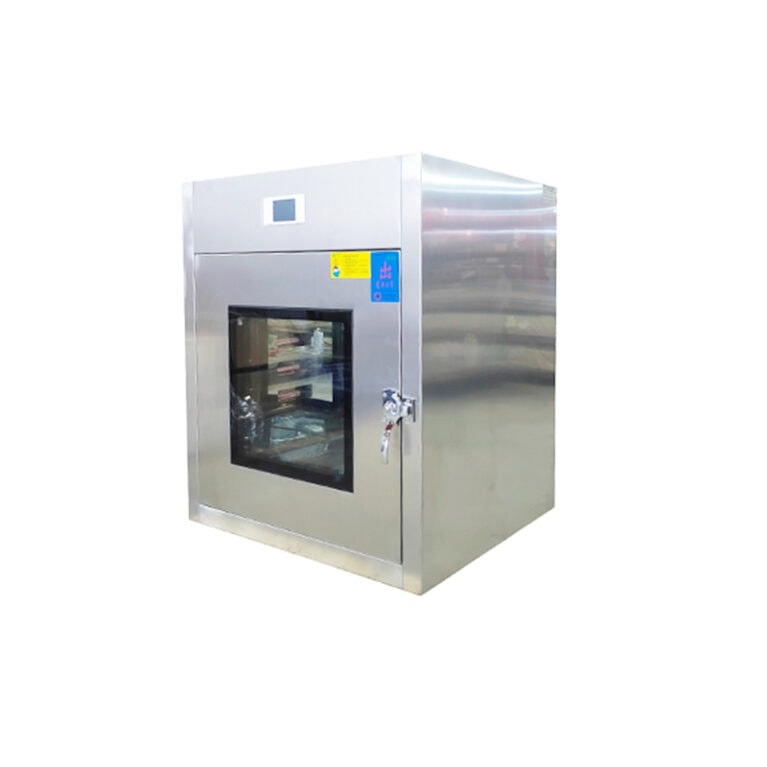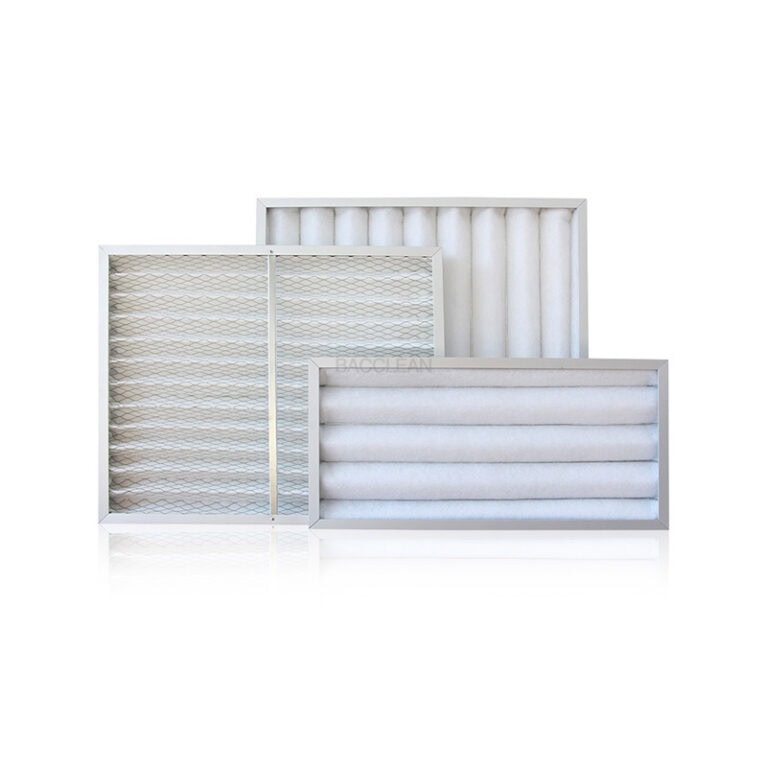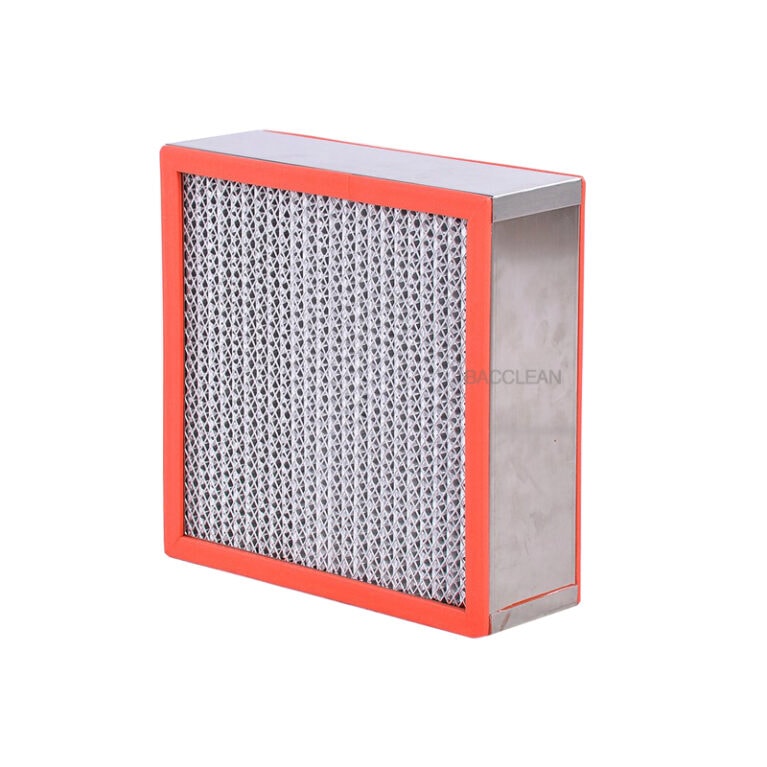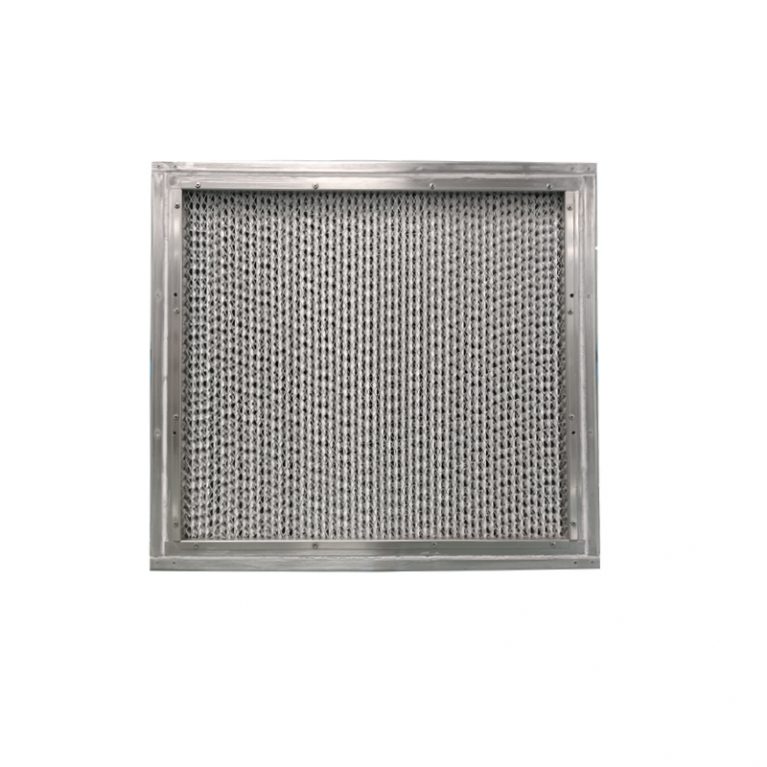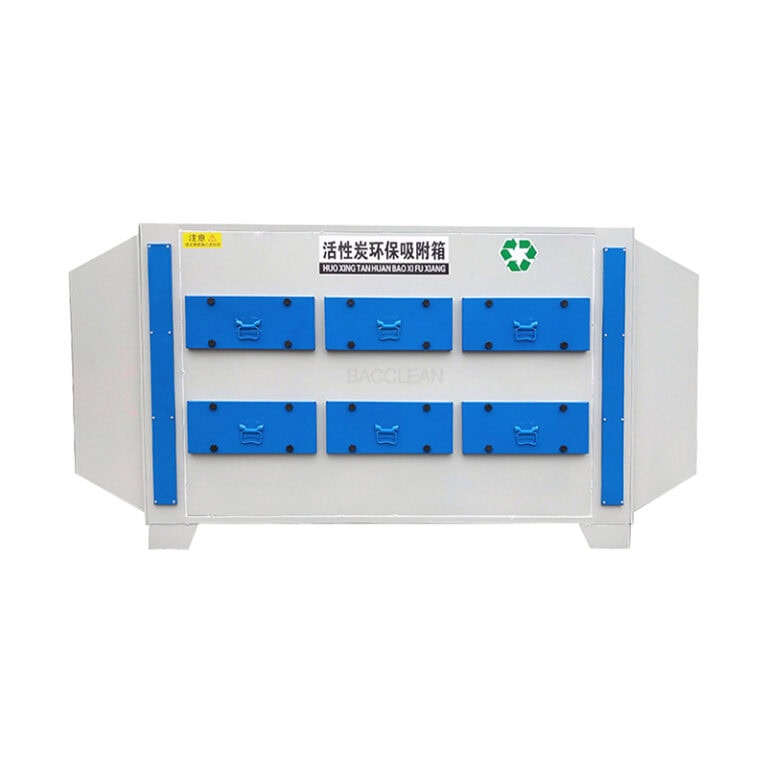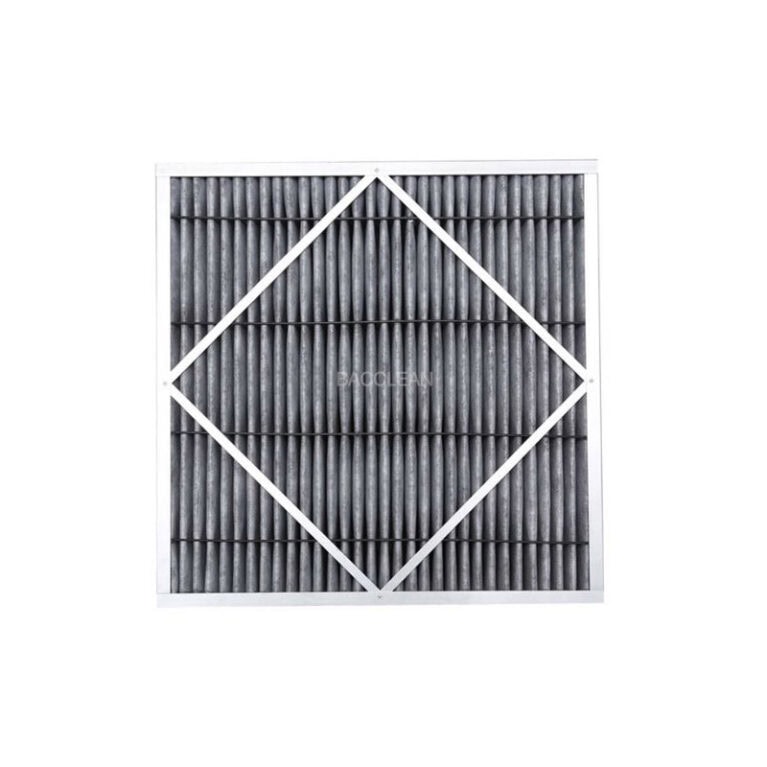The performance of high-temperature resistant air filters with separators (core indicators include filtration efficiency, resistance, dust holding capacity, temperature stability, and structural integrity) is influenced by multiple factors. It is not only directly related to the design, material selection, and manufacturing process of the product itself, but also closely associated with the environmental conditions and operating parameters of the actual application scenarios. The following breaks down the key influencing factors from two major dimensions: “product’s own attributes” and “external usage conditions”
I. Product inherent attributes: Determine the “upper limit of basic performance” of the filter
Such factors are the core design and manufacturing indicators of the filter before it leaves the factory, directly determining its filtration capacity and temperature reliability under rated conditions, and they are the “inherent conditions” of performance.
1. Filter material selection: The core of filtration efficiency and temperature resistance
Filter material is the core component for filters to achieve “air purification”. Its material, structure and processing technology directly determine the filtration efficiency, upper limit of temperature resistance and dust holding capacity, and are the primary factors affecting performance.
I. Product inherent attributes: Determine the “upper limit of basic performance” of the filter
Such factors are the core design and manufacturing indicators of the filter before it leaves the factory, directly determining its filtration capacity and temperature reliability under rated conditions, and they are the “inherent conditions” of performance.
1. Filter material selection: The core of filtration efficiency and temperature resistance
Filter material is the core component for filters to achieve “air purification”. Its material, structure and processing technology directly determine the filtration efficiency, upper limit of temperature resistance and dust holding capacity, and are the primary factors affecting performance.
Filter material:
It is necessary to meet the dual requirements of “high-temperature resistance” and “filtration efficiency” simultaneously. The temperature resistance range and filtration characteristics of different materials vary greatly
Glass fiber filter material: The most commonly used type, temperature resistance range 150℃-280℃ (ordinary type), 300℃-400℃ (high-silica glass fiber), fine fiber diameter (1-3μm), high porosity, can achieve F8-H14 filtration efficiency, large dust holding capacity, but poor bending resistance (needs to rely on partition support).
Ceramic fiber filter material: It has a higher temperature resistance (400℃-1200℃) and is suitable for extremely high-temperature scenarios (such as metallurgy and incineration), but its filtration efficiency is relatively low (mostly G4-F7 grades), and the material is brittle and prone to fiber shedding.
Metal mesh/metal fiber felt: It can withstand temperatures above 500℃ (such as stainless steel material), has high mechanical strength, can be cleaned and reused, but has low filtration efficiency (mostly coarse to medium efficiency), and is only suitable for high-temperature coarse filtration scenarios (such as pre-filtration of boiler flue gas).
Composite filter materials: such as “glass fiber + PTFE coating”, can maintain temperature resistance (below 200℃) while enhancing filtration efficiency (up to H13 or above) and anti-dust adhesion ability. However, the coating is prone to aging and failure at high temperatures (may crack above 250℃).
Filter material structure
Fiber density: The higher the density, the higher the filtration efficiency, but the initial resistance is also greater. If the density is too low, it is prone to dust leakage, and a balance needs to be struck between “efficiency” and “resistance”.
Thickness and pore distribution: Thick filter materials have a greater dust-holding capacity (they can hold more dust before reaching the upper limit of resistance), but their resistance is also higher. Poor uniformity of pore distribution can lead to a “short circuit” in the airflow and a decrease in local filtration efficiency.
2. Partition design: Affects airflow distribution and structural stability
“Having separators” is the core structural feature of this type of filter. The function of the separators is to support the filter material, separate the filter material folds, and ensure that the airflow passes through each filter material channel evenly. Design flaws in them will directly damage the filtration efficiency and temperature stability.
It is necessary to meet the dual requirements of “high-temperature resistance” and “filtration efficiency” simultaneously. The temperature resistance range and filtration characteristics of different materials vary greatly
Glass fiber filter material: The most commonly used type, temperature resistance range 150℃-280℃ (ordinary type), 300℃-400℃ (high-silica glass fiber), fine fiber diameter (1-3μm), high porosity, can achieve F8-H14 filtration efficiency, large dust holding capacity, but poor bending resistance (needs to rely on partition support).
Ceramic fiber filter material: It has a higher temperature resistance (400℃-1200℃) and is suitable for extremely high-temperature scenarios (such as metallurgy and incineration), but its filtration efficiency is relatively low (mostly G4-F7 grades), and the material is brittle and prone to fiber shedding.
Metal mesh/metal fiber felt: It can withstand temperatures above 500℃ (such as stainless steel material), has high mechanical strength, can be cleaned and reused, but has low filtration efficiency (mostly coarse to medium efficiency), and is only suitable for high-temperature coarse filtration scenarios (such as pre-filtration of boiler flue gas).
Composite filter materials: such as “glass fiber + PTFE coating”, can maintain temperature resistance (below 200℃) while enhancing filtration efficiency (up to H13 or above) and anti-dust adhesion ability. However, the coating is prone to aging and failure at high temperatures (may crack above 250℃).
Filter material structure
Fiber density: The higher the density, the higher the filtration efficiency, but the initial resistance is also greater. If the density is too low, it is prone to dust leakage, and a balance needs to be struck between “efficiency” and “resistance”.
Thickness and pore distribution: Thick filter materials have a greater dust-holding capacity (they can hold more dust before reaching the upper limit of resistance), but their resistance is also higher. Poor uniformity of pore distribution can lead to a “short circuit” in the airflow and a decrease in local filtration efficiency.
2. Partition design: Affects airflow distribution and structural stability
“Having separators” is the core structural feature of this type of filter. The function of the separators is to support the filter material, separate the filter material folds, and ensure that the airflow passes through each filter material channel evenly. Design flaws in them will directly damage the filtration efficiency and temperature stability.
Partition material
It needs to be heat-resistant and not deform. Common materials include:
Aluminum foil partition: It can withstand temperatures below 250℃, is lightweight and has good thermal conductivity, but it is prone to oxidation at high temperatures (it may become brittle above 300℃).
Galvanized steel plate/stainless steel partition: Resistant to temperature 300℃-400℃, high mechanical strength and anti-deformation, but heavy in weight and high in cost, suitable for high-temperature working conditions.
High-temperature resistant paper partitions (such as aramid paper) : They can withstand temperatures ranging from 180℃ to 220℃, have low costs and are lightweight. However, they are prone to moisture absorption and deformation under high humidity and high temperatures, leading to the collapse of the filter material layers.
Partition spacing and folding height
The spacing is too small (such as less than 5mm) : The gap between the filter material’s folded layers is narrow, resulting in high air flow resistance, and dust is prone to accumulate in the gap between the partition and the filter material, accelerating clogging.
Excessive spacing (such as > 10mm) : The expanded area of the filter material is insufficient, the load on the filter material per unit area is too high, the filtration efficiency decreases, and the airflow is prone to “penetrate” the gaps between the filter material layers (passing through directly without filtration).
Uneven folded height: If the folded height of the filter material is inconsistent, it will cause the air flow velocity in some channels to be too fast (with low resistance) and too slow (with high resistance), resulting in an uneven air distribution and a decrease in overall filtration efficiency.
3. Frame and sealing materials: Determine structural integrity and air leakage prevention capacity
The frame serves as the “skeleton” of the filter, while the sealing material is used to prevent “unfiltered air” from entering the system through the gaps. The failure of both will directly lead to “bypass leakage”, causing a sudden drop in filtration efficiency (even if the filter material efficiency meets the standards, the leaked air will still allow contaminants to bypass the filter material).
It needs to be heat-resistant and not deform. Common materials include:
Aluminum foil partition: It can withstand temperatures below 250℃, is lightweight and has good thermal conductivity, but it is prone to oxidation at high temperatures (it may become brittle above 300℃).
Galvanized steel plate/stainless steel partition: Resistant to temperature 300℃-400℃, high mechanical strength and anti-deformation, but heavy in weight and high in cost, suitable for high-temperature working conditions.
High-temperature resistant paper partitions (such as aramid paper) : They can withstand temperatures ranging from 180℃ to 220℃, have low costs and are lightweight. However, they are prone to moisture absorption and deformation under high humidity and high temperatures, leading to the collapse of the filter material layers.
Partition spacing and folding height
The spacing is too small (such as less than 5mm) : The gap between the filter material’s folded layers is narrow, resulting in high air flow resistance, and dust is prone to accumulate in the gap between the partition and the filter material, accelerating clogging.
Excessive spacing (such as > 10mm) : The expanded area of the filter material is insufficient, the load on the filter material per unit area is too high, the filtration efficiency decreases, and the airflow is prone to “penetrate” the gaps between the filter material layers (passing through directly without filtration).
Uneven folded height: If the folded height of the filter material is inconsistent, it will cause the air flow velocity in some channels to be too fast (with low resistance) and too slow (with high resistance), resulting in an uneven air distribution and a decrease in overall filtration efficiency.
3. Frame and sealing materials: Determine structural integrity and air leakage prevention capacity
The frame serves as the “skeleton” of the filter, while the sealing material is used to prevent “unfiltered air” from entering the system through the gaps. The failure of both will directly lead to “bypass leakage”, causing a sudden drop in filtration efficiency (even if the filter material efficiency meets the standards, the leaked air will still allow contaminants to bypass the filter material).
Frame material
Heat resistance and deformation resistance are required. Common materials:
Aluminum alloy frame: Resistant to temperatures below 200℃, lightweight and easy to process, but prone to softening at high temperatures (may deform above 250℃).
Stainless steel frame (304/316) : It can withstand temperatures above 400℃, is corrosion-resistant and has high strength. It is suitable for high-temperature, high-humidity or corrosive environments (such as chemical industry and waste incineration), but it is expensive.
High-temperature resistant plastic frames (such as PEEK) : They can withstand temperatures below 260℃, are lightweight and corrosion-resistant, but their mechanical strength is lower than that of metals. They are only suitable for medium and low-temperature scenarios.
Sealing material:
Core requirements: No softening, no aging, no release of harmful substances at high temperatures. Common types
Silicone rubber sealing strips: Resistant to temperatures ranging from 200℃ to 300℃, with good elasticity and strong sealing performance, they are the mainstream choice.
High-temperature resistant asbestos pads: They can withstand temperatures above 400℃, but have gradually been phased out due to environmental protection issues (containing carcinogens).
Graphite gasket: It can withstand temperatures above 600℃ and is suitable for extreme high temperatures. However, it is brittle in texture, and its sealing performance relies on the clamping force. Improper installation can easily lead to air leakage.
Sealing method: If the sealant is not firmly bonded to the frame/filter material (such as cracking of the sealant layer at high temperatures), or if the compression of the sealing strip is insufficient (not compressed tightly during installation), a gap will be formed, causing “unfiltered air” to bypass.
4. Manufacturing process: Affects product consistency and reliability
Even if the materials are of high quality, precision errors or process defects in the manufacturing process can lead to performance fluctuations and even direct failure.
Heat resistance and deformation resistance are required. Common materials:
Aluminum alloy frame: Resistant to temperatures below 200℃, lightweight and easy to process, but prone to softening at high temperatures (may deform above 250℃).
Stainless steel frame (304/316) : It can withstand temperatures above 400℃, is corrosion-resistant and has high strength. It is suitable for high-temperature, high-humidity or corrosive environments (such as chemical industry and waste incineration), but it is expensive.
High-temperature resistant plastic frames (such as PEEK) : They can withstand temperatures below 260℃, are lightweight and corrosion-resistant, but their mechanical strength is lower than that of metals. They are only suitable for medium and low-temperature scenarios.
Sealing material:
Core requirements: No softening, no aging, no release of harmful substances at high temperatures. Common types
Silicone rubber sealing strips: Resistant to temperatures ranging from 200℃ to 300℃, with good elasticity and strong sealing performance, they are the mainstream choice.
High-temperature resistant asbestos pads: They can withstand temperatures above 400℃, but have gradually been phased out due to environmental protection issues (containing carcinogens).
Graphite gasket: It can withstand temperatures above 600℃ and is suitable for extreme high temperatures. However, it is brittle in texture, and its sealing performance relies on the clamping force. Improper installation can easily lead to air leakage.
Sealing method: If the sealant is not firmly bonded to the frame/filter material (such as cracking of the sealant layer at high temperatures), or if the compression of the sealing strip is insufficient (not compressed tightly during installation), a gap will be formed, causing “unfiltered air” to bypass.
4. Manufacturing process: Affects product consistency and reliability
Even if the materials are of high quality, precision errors or process defects in the manufacturing process can lead to performance fluctuations and even direct failure.
Bonding of filter material to frame
If the temperature resistance of the adhesive used is insufficient (for example, the temperature resistance of ordinary epoxy resin adhesive is only 120℃), the adhesive layer will soften and fall off at high temperatures, causing the filter material to separate from the frame, resulting in the filter material shifting and air leakage.
If the bonding area is too small or the adhesive layer is uneven, it will cause local force concentration, and the filter material is prone to tearing at high temperatures.
Assembly accuracy of the partition
When the partition is inserted into the folded layer of the filter material and shifts, it will squeeze the filter material, causing local fiber damage and forming “dust leakage points”.
The partition and the frame are not firmly fixed, and they will loosen at high temperatures, damaging the channel structure of the filter material.
Leakage detection process
If strict “scanning leak detection” (such as DOP/PAO leak detection) is not carried out before leaving the factory, products with tiny leakage points will enter the market. In actual use, the filtration efficiency will be far lower than the nominal value.
Ii. External Usage Conditions: Determine the “Actual Performance” of the filter
Even if the filter itself is designed to meet the standards, if the usage environment or operating parameters exceed its rated range, its performance will rapidly decline, and it may even be directly damaged.
1. Ambient temperature: It directly determines the stability of the filter material and structure
“High-temperature resistance” is the core feature, but exceeding the upper limit of the filter’s rated temperature will cause irreversible damage:
If the temperature resistance of the adhesive used is insufficient (for example, the temperature resistance of ordinary epoxy resin adhesive is only 120℃), the adhesive layer will soften and fall off at high temperatures, causing the filter material to separate from the frame, resulting in the filter material shifting and air leakage.
If the bonding area is too small or the adhesive layer is uneven, it will cause local force concentration, and the filter material is prone to tearing at high temperatures.
Assembly accuracy of the partition
When the partition is inserted into the folded layer of the filter material and shifts, it will squeeze the filter material, causing local fiber damage and forming “dust leakage points”.
The partition and the frame are not firmly fixed, and they will loosen at high temperatures, damaging the channel structure of the filter material.
Leakage detection process
If strict “scanning leak detection” (such as DOP/PAO leak detection) is not carried out before leaving the factory, products with tiny leakage points will enter the market. In actual use, the filtration efficiency will be far lower than the nominal value.
Ii. External Usage Conditions: Determine the “Actual Performance” of the filter
Even if the filter itself is designed to meet the standards, if the usage environment or operating parameters exceed its rated range, its performance will rapidly decline, and it may even be directly damaged.
1. Ambient temperature: It directly determines the stability of the filter material and structure
“High-temperature resistance” is the core feature, but exceeding the upper limit of the filter’s rated temperature will cause irreversible damage:
Short-term overheating (such as reaching 350℃ for an instant and lasting for 1-2 hours) : It may cause the softening of filter material fibers (for instance, glass fibers will melt when the temperature exceeds 300℃), deformation of partitions (such as brittleness of aluminum foil partitions), cracking of sealant, and a decrease of 30% to 50% in filtration efficiency.
Long-term over-temperature (such as continuous operation temperature exceeding the rated value by 20℃) : The filter material will gradually age, its strength will decline, its dust holding capacity will decrease (dust is easy to penetrate), and its service life will be shortened by more than 50%.
Excessive temperature fluctuations (such as frequent switching between 100℃ and 250℃) : The different thermal expansion coefficients of the frame and the filter material can cause cracking at the bonding point between the two, resulting in air leakage.
2. Environmental humidity and corrosiveness: Accelerate material aging and structural damage
High-temperature environments accompanied by high humidity or corrosive gases will accelerate the performance degradation of the filter.
Long-term over-temperature (such as continuous operation temperature exceeding the rated value by 20℃) : The filter material will gradually age, its strength will decline, its dust holding capacity will decrease (dust is easy to penetrate), and its service life will be shortened by more than 50%.
Excessive temperature fluctuations (such as frequent switching between 100℃ and 250℃) : The different thermal expansion coefficients of the frame and the filter material can cause cracking at the bonding point between the two, resulting in air leakage.
2. Environmental humidity and corrosiveness: Accelerate material aging and structural damage
High-temperature environments accompanied by high humidity or corrosive gases will accelerate the performance degradation of the filter.
High humidity (relative humidity > 80%)
The paper partition will absorb moisture and deform, causing the filter material to fold and collapse.
Metal frames/partitions are prone to oxidation and rusting (for instance, galvanized steel plates start to rust within 2-3 months under high temperature and high humidity conditions), and their structural strength decreases.
If the filter material absorbs moisture, it will cause a sharp increase in resistance (dust clumps and blocks the pores when it meets water), and it is also prone to the growth of microorganisms (the risk is even higher in food/pharmaceutical scenarios).
Corrosive gases (such as sulfur and chlor-containing gases) :
In chemical and waste incineration scenarios, high-temperature flue gas containing corrosive gases such as SO₂ and HCl can corrode stainless steel frames (304 stainless steel can only withstand temperatures below 200℃ in chlorine-containing gases) and damage the fiber structure of filter materials (for instance, glass fibers will hydrolyze when exposed to acid), leading to a sudden drop in filtration efficiency.
3. Dust characteristics: Affect dust holding capacity and service life
The concentration, particle size, morphology and viscosity of dust directly determine the clogging speed and service life of the filter.
Dust concentration: The higher the concentration (for instance, when the dust concentration in a metallurgical workshop reaches 50mg/m³), the pores of the filter material will be clogged more quickly, and the time for the resistance to reach the upper limit will be shortened (originally it could be used for 6 months, but it may only take 2 months before replacement is needed).
Dust particle size
Fine dust (< 1μm, such as silicon powder in semiconductor workshops) can easily penetrate the surface layer of the filter material and reach the internal pores, making it difficult to clean and reducing the dust holding capacity.
Coarse dust (> 10μm, such as metal processing debris) is prone to accumulate on the surface of the filter material. Although the resistance increases rapidly, its service life can be extended by regular purging (such as pulse back-blowing) (requiring the filter to support a washable design).
Dust stickiness: Dust with high stickiness (such as sugar powder in food processing and resin particles in chemical industry) will adhere to the surface of the filter material and cannot be cleaned by blowing. It will quickly clog the pores and its dust holding capacity is only 1/3 to 1/2 of that of ordinary dust.
4. Airflow parameters: Affect filtration efficiency and resistance stability
The wind speed, air volume and uniformity of air distribution of the airflow will change the actual working state of the filter material. Deviation from the design parameters will lead to abnormal performance
Excessively high wind speed (more than 1.5 times the designed wind speed) :
The increase in the impact force of the airflow on the filter material may cause damage to the filter material fibers (especially the glass fibers), resulting in “secondary dust raising” (the captured dust is blown away by the airflow).
The resistance rises sharply (resistance is proportional to the square of the wind speed), energy consumption increases, and the filter material is prone to deformation due to excessive local pressure.
Low wind speed (less than 50% of the designed wind speed) :
If the airflow stays in the filter material channel for too long, dust is prone to settle at the bottom of the partition due to gravity, causing local blockage and reducing the overall dust holding capacity instead.
The filtration efficiency has declined (some fine dust particles, due to the low air flow velocity, cannot be intercepted by the filter material fibers and penetrate with the air flow).
Uneven air flow distribution
If the air flow at the air intake of the air conditioning system or equipment is disordered (such as the presence of vortices), it will cause the local air velocity in the filter to be too high or too low. The filter material in the high air velocity area will clog rapidly, and the filtration efficiency in the low air velocity area will be insufficient, resulting in a decline in overall performance.
5. Maintenance and replacement cycle: Affects long-term performance stability
The maintenance method of the filter directly determines its “effective service life” :
Failure to replace in time: When the resistance reaches the rated upper limit (such as 2-3 times the initial resistance), if it is still used, it will lead to:
Airflow short circuit (unfiltered air bypasses the damaged parts of the filter material or the gaps in the frame);
The system energy consumption increases (the fan needs more power to overcome resistance);
Filter material damage (excessive blockage causes local excessive pressure, resulting in filter material tearing);
Improper maintenance: For instance, using a high-pressure water gun to clean non-washable filters (such as glass fiber filter materials) will directly damage the structure of the filter material, leading to the failure of filtration efficiency.
Summary: Core influencing logic
The performance of high-temperature resistant air filters with separators is the result of the combined effect of “product inherent attributes” and “external usage conditions” :
The product attributes (filter material, partition, frame, process) determine the “upper limit of performance” – if the filter material has insufficient temperature resistance and the partition design is unreasonable, it will not meet the standards even in an ideal environment.
External conditions (temperature, humidity, dust, air flow) determine the “lower limit of performance” – even if the product is well designed, if it operates for a long time in an environment with excessive temperature, high humidity or high dust concentration, its performance will rapidly decline.
Therefore, when choosing this type of filter, it is necessary to first clarify the maximum temperature, dust characteristics, and airflow parameters of the actual application, then match the corresponding filter materials, partition plates, and frame materials, and at the same time formulate a reasonable maintenance cycle to ensure its long-term stable operation.
The paper partition will absorb moisture and deform, causing the filter material to fold and collapse.
Metal frames/partitions are prone to oxidation and rusting (for instance, galvanized steel plates start to rust within 2-3 months under high temperature and high humidity conditions), and their structural strength decreases.
If the filter material absorbs moisture, it will cause a sharp increase in resistance (dust clumps and blocks the pores when it meets water), and it is also prone to the growth of microorganisms (the risk is even higher in food/pharmaceutical scenarios).
Corrosive gases (such as sulfur and chlor-containing gases) :
In chemical and waste incineration scenarios, high-temperature flue gas containing corrosive gases such as SO₂ and HCl can corrode stainless steel frames (304 stainless steel can only withstand temperatures below 200℃ in chlorine-containing gases) and damage the fiber structure of filter materials (for instance, glass fibers will hydrolyze when exposed to acid), leading to a sudden drop in filtration efficiency.
3. Dust characteristics: Affect dust holding capacity and service life
The concentration, particle size, morphology and viscosity of dust directly determine the clogging speed and service life of the filter.
Dust concentration: The higher the concentration (for instance, when the dust concentration in a metallurgical workshop reaches 50mg/m³), the pores of the filter material will be clogged more quickly, and the time for the resistance to reach the upper limit will be shortened (originally it could be used for 6 months, but it may only take 2 months before replacement is needed).
Dust particle size
Fine dust (< 1μm, such as silicon powder in semiconductor workshops) can easily penetrate the surface layer of the filter material and reach the internal pores, making it difficult to clean and reducing the dust holding capacity.
Coarse dust (> 10μm, such as metal processing debris) is prone to accumulate on the surface of the filter material. Although the resistance increases rapidly, its service life can be extended by regular purging (such as pulse back-blowing) (requiring the filter to support a washable design).
Dust stickiness: Dust with high stickiness (such as sugar powder in food processing and resin particles in chemical industry) will adhere to the surface of the filter material and cannot be cleaned by blowing. It will quickly clog the pores and its dust holding capacity is only 1/3 to 1/2 of that of ordinary dust.
4. Airflow parameters: Affect filtration efficiency and resistance stability
The wind speed, air volume and uniformity of air distribution of the airflow will change the actual working state of the filter material. Deviation from the design parameters will lead to abnormal performance
Excessively high wind speed (more than 1.5 times the designed wind speed) :
The increase in the impact force of the airflow on the filter material may cause damage to the filter material fibers (especially the glass fibers), resulting in “secondary dust raising” (the captured dust is blown away by the airflow).
The resistance rises sharply (resistance is proportional to the square of the wind speed), energy consumption increases, and the filter material is prone to deformation due to excessive local pressure.
Low wind speed (less than 50% of the designed wind speed) :
If the airflow stays in the filter material channel for too long, dust is prone to settle at the bottom of the partition due to gravity, causing local blockage and reducing the overall dust holding capacity instead.
The filtration efficiency has declined (some fine dust particles, due to the low air flow velocity, cannot be intercepted by the filter material fibers and penetrate with the air flow).
Uneven air flow distribution
If the air flow at the air intake of the air conditioning system or equipment is disordered (such as the presence of vortices), it will cause the local air velocity in the filter to be too high or too low. The filter material in the high air velocity area will clog rapidly, and the filtration efficiency in the low air velocity area will be insufficient, resulting in a decline in overall performance.
5. Maintenance and replacement cycle: Affects long-term performance stability
The maintenance method of the filter directly determines its “effective service life” :
Failure to replace in time: When the resistance reaches the rated upper limit (such as 2-3 times the initial resistance), if it is still used, it will lead to:
Airflow short circuit (unfiltered air bypasses the damaged parts of the filter material or the gaps in the frame);
The system energy consumption increases (the fan needs more power to overcome resistance);
Filter material damage (excessive blockage causes local excessive pressure, resulting in filter material tearing);
Improper maintenance: For instance, using a high-pressure water gun to clean non-washable filters (such as glass fiber filter materials) will directly damage the structure of the filter material, leading to the failure of filtration efficiency.
Summary: Core influencing logic
The performance of high-temperature resistant air filters with separators is the result of the combined effect of “product inherent attributes” and “external usage conditions” :
The product attributes (filter material, partition, frame, process) determine the “upper limit of performance” – if the filter material has insufficient temperature resistance and the partition design is unreasonable, it will not meet the standards even in an ideal environment.
External conditions (temperature, humidity, dust, air flow) determine the “lower limit of performance” – even if the product is well designed, if it operates for a long time in an environment with excessive temperature, high humidity or high dust concentration, its performance will rapidly decline.
Therefore, when choosing this type of filter, it is necessary to first clarify the maximum temperature, dust characteristics, and airflow parameters of the actual application, then match the corresponding filter materials, partition plates, and frame materials, and at the same time formulate a reasonable maintenance cycle to ensure its long-term stable operation.

